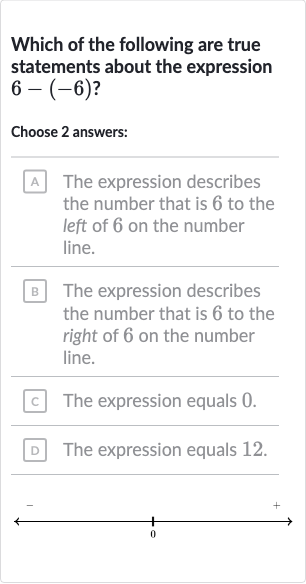AI tutor
Welcome to Bytelearn!
Let’s check out your problem:

Which of the following are true statements about the expression Choose answers:(A) The expression describes the number that is to the left of on the number line.(B) The expression describes the number that is to the right of on the number line.(C) The expression equals .(D) The expression equals .
Full solution
Q. Which of the following are true statements about the expression Choose answers:(A) The expression describes the number that is to the left of on the number line.(B) The expression describes the number that is to the right of on the number line.(C) The expression equals .(D) The expression equals .
- Evaluate Expression: We need to evaluate the expression to understand its value on the number line.Calculation:
- Determine Position: Now that we know the value of the expression is , we can determine its position relative to on the number line.Since is greater than , the expression represents a number that is to the right of on the number line.
- Analyzing Options: Let's analyze the given options:A. The expression describes the number that is to the left of on the number line. This is incorrect because the expression equals , which is to the right of .
- Option A Explanation: B. The expression describes the number that is to the right of on the number line. This is incorrect because the expression equals , which is units to the right of on the number line.
- Option B Explanation: C. The expression equals . This is incorrect because the expression equals , not .
- Option C Explanation: D. The expression equals . This is correct because the calculation we performed in the first step confirms that equals .
